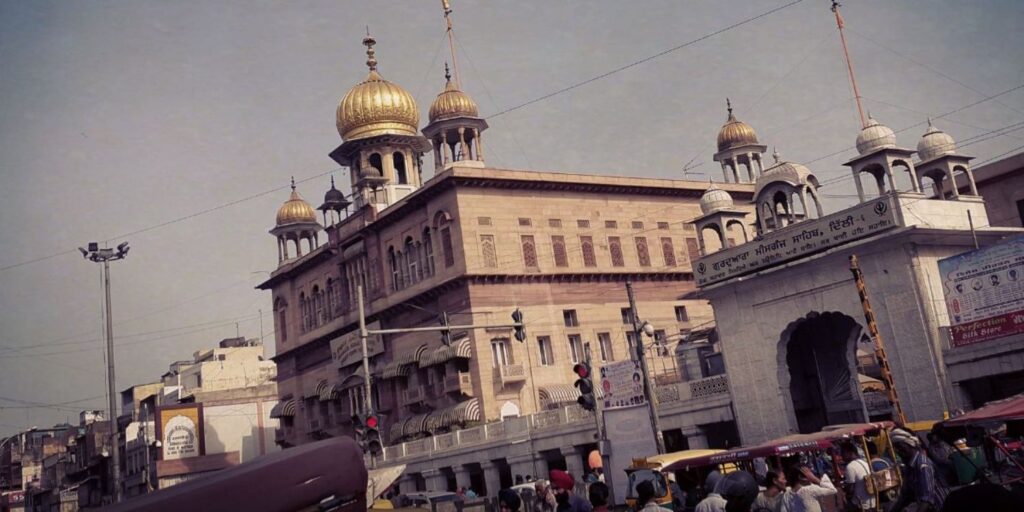Welcome to the spiritual haven of Gurudwara Sis Ganj, a sacred monument deeply rooted in Sikh history and tradition.
Situated in the heart of Delhi, India, this revered site holds profound significance for followers of the Sikh faith worldwide. The term “Gurudwara Sis Ganj” translates to “headquarters” and “execution site,” reflecting the solemn history that permeates its walls.
Gurudwara Sis Ganj is a testament to the unwavering resilience and martyrdom of Guru Tegh Bahadur, the ninth Sikh Guru, who sacrificed his life to protect the religious freedom of Hindus facing persecution under the Mughal Empire.
In 1675 AD, Guru Tegh Bahadur was publicly executed for refusing to convert to Islam, commemorated at the Gurudwara.
Today, Gurudwara Sis Ganj serves as a place of worship, reflection, and community service, welcoming devotees from all walks of life to experience the tranquility and spiritual enrichment it offers.
Its serene ambiance, adorned with intricate architecture and resonant hymns, inspires reverence and devotion among visitors, ensuring that the legacy of Guru Tegh Bahadur lives on for generations to come.
History Of Gurdwara Sis Ganj Sahib
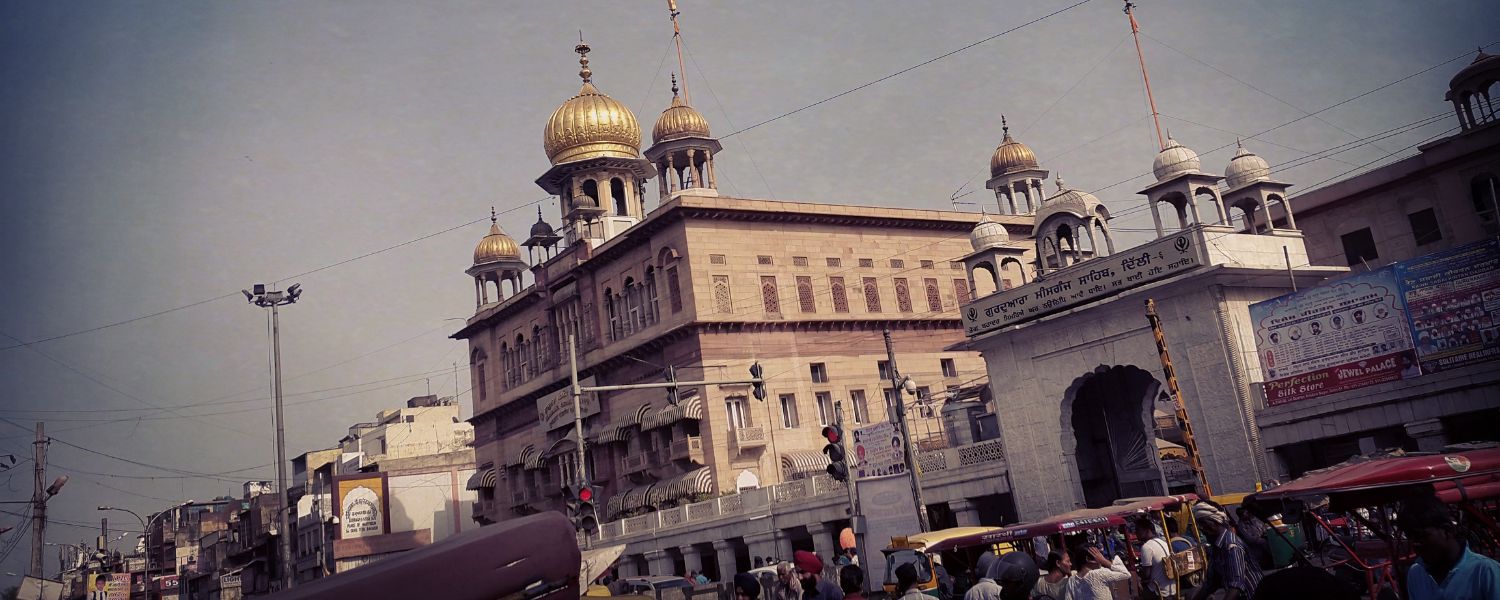
Gurdwara Sis Ganj Sahib holds a significant place among the historical landmarks of Delhi. Its roots trace back to 1783 when Baghel Singh erected a modest shrine to honor the martyrdom site of Guru Tegh Bahadur, the ninth Guru of the Sikh faith. Over time, this humble structure evolved into the grand Gurdwara that stands today.
The name “Sis Ganj” commemorates the gruesome event of Guru Tegh Bahadur’s beheading by the orders of Mughal Emperor Aurangzeb, who sought to suppress religious freedom. This sacred place became a symbol of Sikh resilience and devotion.
The Gurdwara’s history intertwines with significant events in India’s past. It is believed to have undergone expansion either in the Indian Rebellion of 1857 or during the Partition of India.
These tumultuous periods likely prompted the Sikh community to reinforce their spiritual sanctuaries as beacons of strength and unity.
Today, Gurdwara Sis Ganj Sahib stands as a testament to the enduring spirit of Sikhism and serves as a haven for pilgrims seeking solace and inspiration. As a focal point for Sikh heritage places in Delhi devotion, Tourists from various backgrounds are still attracted to Gurdwara Sis Ganj Sahib, offering a glimpse into the tapestry of India’s cultural and religious diversity.
Its tranquil ambiance and architectural splendor provide a serene backdrop for contemplation and prayer, embodying the timeless teachings of Guru Tegh Bahadur and the enduring legacy of Sikh tradition.
Architecture of Gurdwara Sis Ganj Sahib
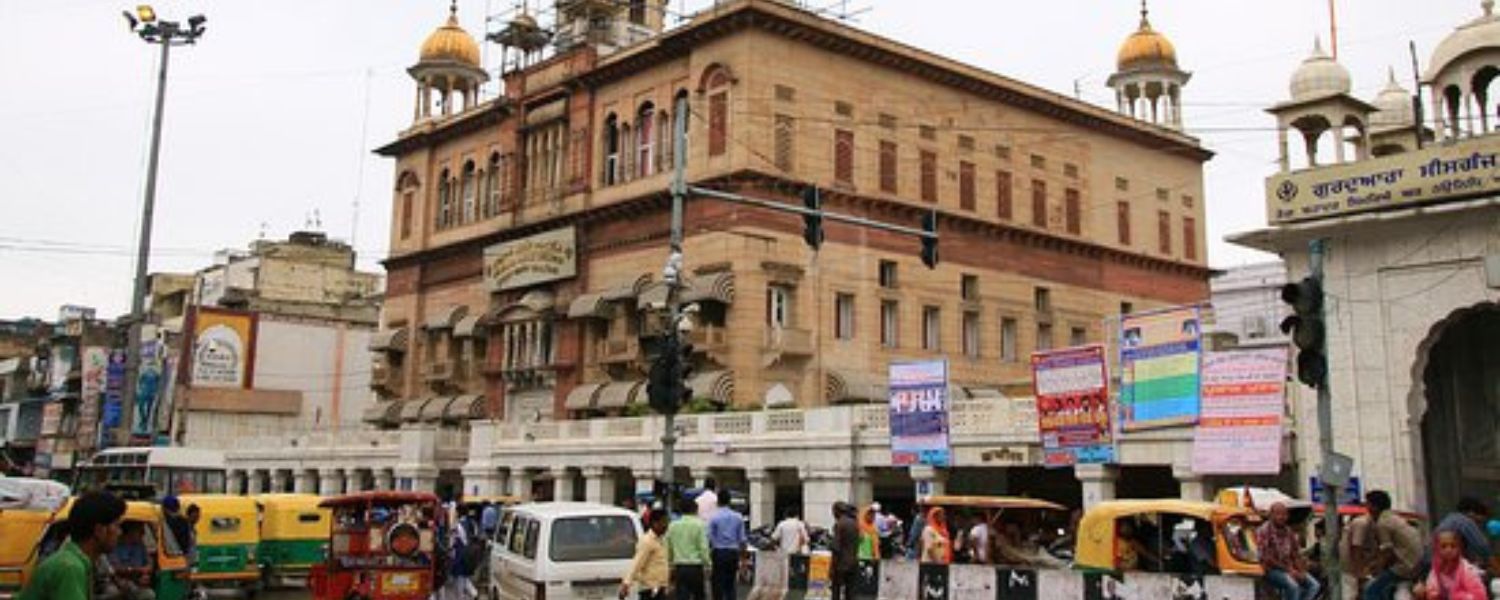
Gurudwara Sis Ganj Sahib stands as a testament to the rich architectural heritage of Sikhism, harmoniously blending Mughal and Sikh styles to create a site of remarkable beauty and spiritual significance. The architecture of this gurudwara seamlessly intertwines elements from both traditions, offering visitors a captivating visual experience.
At the heart of the gurudwara lies its main entrance, the “Deori,” a grand gateway that serves as a majestic preamble to the spiritual sanctuary beyond.
Adorned with intricate marble work and a towering arched facade, the Deori commands attention and reverence from all who approach it. Its design reflects the cultural synthesis that defines Sikh architecture, incorporating Mughal motifs with a distinct Sikh aesthetic.
Inside the gurudwara, visitors are greeted by a tranquil atmosphere infused with devotion and history. The architectural details, from the ornate domes to the delicate carvings, offer a glimpse into the artistic mastery of artisans from centuries past.
Every element serves a purpose, inviting worshippers to immerse themselves fully in prayer and reflection.
Gurudwara Sis Ganj stands not only as a place of worship but also to the enduring spirit of Sikhism and its ability to embrace diversity while maintaining its distinct identity.
With its captivating architecture and profound spiritual significance, its magnificence still impresses and inspires deep respect in anyone who comes across it.
What are the Tips to Follow
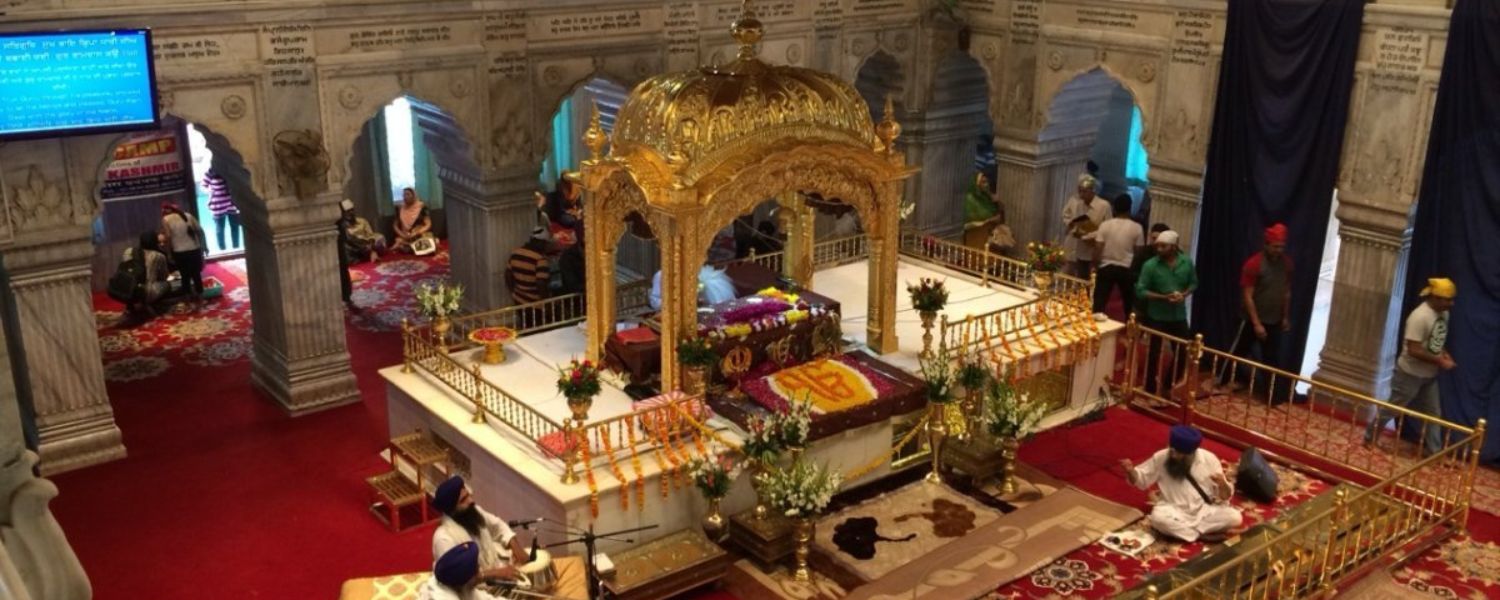
When visiting the revered Gurudwara Sis Ganj, remember a few essential tips to ensure a respectful and fulfilling experience. Pilgrims are traditionally expected to enter the gurudwara barefoot as a sign of humility and respect. Covering your head before entering the premises is also customary, signifying reverence.
You can easily adhere to this tradition by carrying a scarf or other head-covering item. Furthermore, to maintain cleanliness within the gurudwara premises, there are designated clock rooms where you can deposit your footwear securely.
This ensures the sanctity of the place and reflects the principle of equality as everyone follows this practice irrespective of their background or status.
In addition to partaking in the spiritual ambiance, visitors to Gurudwara Sis Ganj can also engage in volunteer work, which is highly encouraged and appreciated. Volunteering offers an opportunity to contribute to the community and experience the joy of selfless service, a core tenet of Sikhism.
In essence, by following these simple tips—entering barefoot with a covered head, depositing footwear at the clock room, and potentially engaging in volunteer activities—visitors can fully immerse themselves in the spiritual ambiance and teachings of Gurudwara Sis Ganj, fostering a profoundly enriching experience.
How to Reach Gurudwara Sis Ganj Sahib?

Finding your way there is a straightforward endeavor if you’re seeking the spiritual solace and cultural richness of Gurudwara Sis Ganj Sahib. In the heart of Delhi, India, Gurudwara Sis Ganj Sahib is a revered Sikh pilgrimage site. To reach this sacred place, one can utilize various modes of transportation available in the bustling city.
Delhi’s efficient metro system is a convenient choice for public transit users. The gurudwara sis ganj sahib nearest metro station to Gurudwara Sis Ganj Sahib is Chandni Chowk, located on the Yellow Line.
From there, a short walk through the vibrant streets of Old Delhi will lead you to the Gurudwara. Alternatively, auto-rickshaws and cycle-rickshaws are readily available for a more personalized journey through the narrow lanes.
Navigating to the Gurudwara is relatively simple if you prefer traveling by car or taxi. Chandni Chowk is a prominent landmark, and following directions to this bustling market area will guide you close to your destination. However, planning your visit during non-peak hours is advisable to avoid heavy traffic congestion.
Significance of Gurudwara Sis Ganj
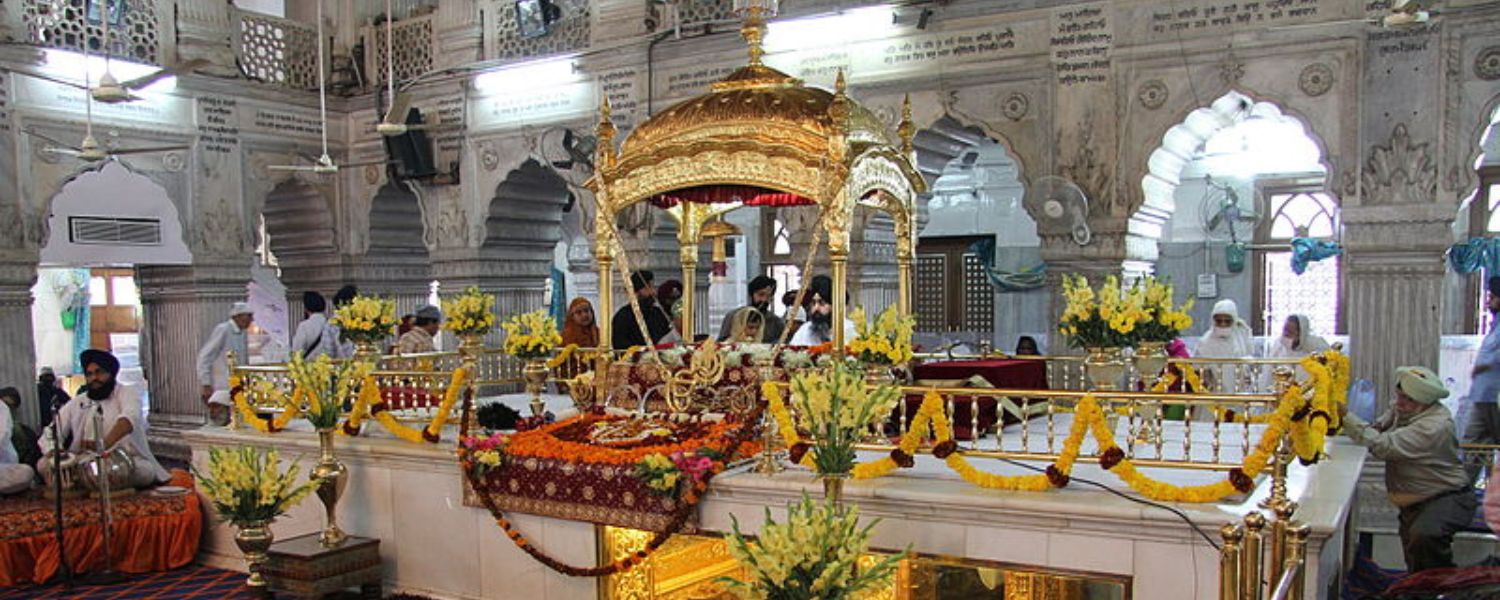
Gurudwara Sis Ganj Sahib holds immense significance in Sikh history and culture. Situated in Delhi, it is a testament to the courage/sacrifice of Guru Tegh Bahadur Ji, the ninth Sikh Guru. Established in 1783 by Baghel Singh, this sacred site was initially a modest shrine.
However, its importance grew over Gurudwara sis Ganj Sahib’s timings, especially after significant events like the Indian Rebellion of 1857 and the Partition of India. It serves as a symbol of resilience/faith, attracting devotees and visitors alike. The Gurudwara stands at the very place where Guru Tegh Bahadur was martyred, embodying the spirit of Sikhism’s rich history and teachings.
Every corner of Gurudwara Sis Ganj echoes with stories of bravery and sacrifice. It’s not just a place of worship but a sanctuary of peace and unity, welcoming people from all walks of life. The architectural magnificence and serene ambiance of the Gurudwara inspire reflection and introspection.
For Sikhs, paying homage to Gurudwara Sis Ganj is a profoundly spiritual experience, fostering a connection to their heritage and faith. It serves as a reminder of Guru Tegh Bahadur’s unwavering commitment to justice and religious freedom.
In essence, Gurudwara Sis Ganj is more than just a physical structure; it’s a beacon of hope, guiding generations toward righteousness and compassion.
Guru Tegh Bahadur’s Martyrdom at Sis Ganj
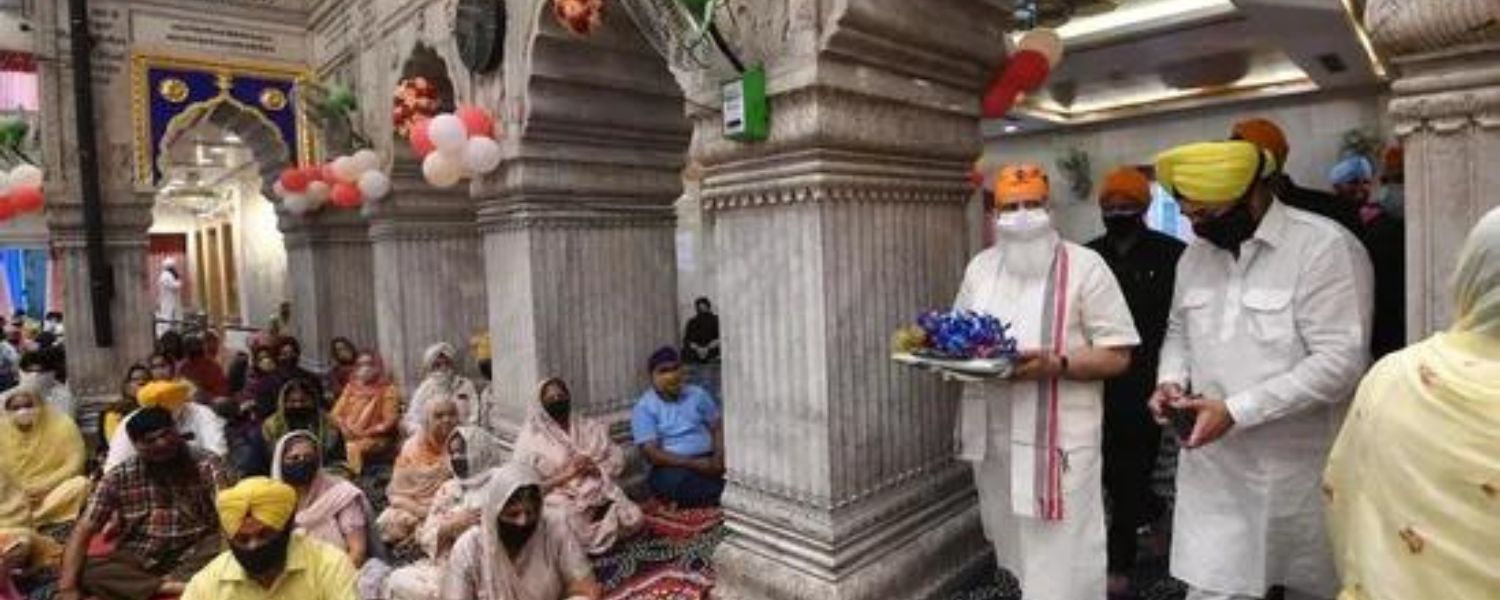
Guru Tegh Bahadur Ji, the ninth Guru of the Sikhs, is commemorated on Shaheedi Divas for his unwavering stance against religious oppression during the Mughal era. His martyrdom at Sis Ganj, now commemorated by Gurdwara Sis Ganj Sahib in Delhi’s bustling Chandni Chowk, remains a poignant chapter in Sikh history.
The focal point of this solemn site is the martyrdom of Guru Tegh Bahadur, who sacrificed his life rather than compromise on the principles of religious freedom and tolerance. During Aurangzeb’s reign, the Mughal empire was marked by policies that sought to enforce Islamic orthodoxy and convert non-Muslims forcefully.
In response to this oppression, Guru Tegh Bahadur bravely confronted Aurangzeb’s religious tyranny, refusing to yield to his demands for conversion. Despite facing immense pressure and threats of brutal execution, Guru Tegh Bahadur remained steadfast in his commitment to defending the right of all individuals to practice their faith freely.
The historic Gurdwara Sis Ganj Sahib is a testament to Guru Tegh Bahadur’s courage and sacrifice. It serves as a reminder of the enduring values of justice, equality, and religious tolerance upheld by Sikhism. Today, pilgrims and visitors from around the world gather at this sacred site to pay homage to Guru Tegh Bahadur and to draw inspiration from his selfless act of defiance.
Gurdwara Sis Ganj Sahib stands not only as a place of worship but also as a beacon of hope and resilience for all who seek to uphold the principles of righteousness and freedom of conscience.
Sikh Festivals Celebrated at Sis Ganj
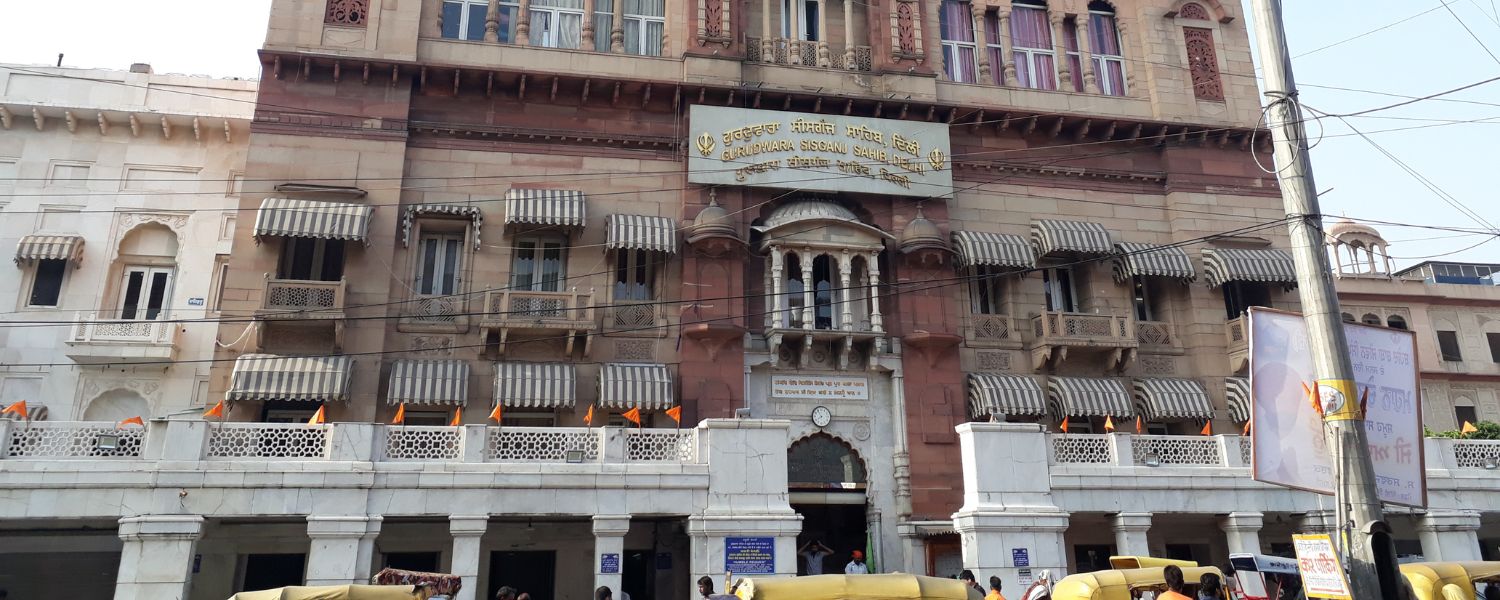
At Gurudwara Sis Ganj, located in the heart of parks in South Delhi, Sikh festivals hold immense significance, bringing together devotees in celebration and reverence.
Among the significant Sikh festivals observed at this historic Gurudwara are Guru Nanak Jayanti, Baisakhi, and the martyrdom day of Guru Tegh Bahadur. These occasions are marked with special prayers, vibrant processions, and communal services, creating an atmosphere of spiritual hunger and unity.
During Guru Nanak Jayanti, commemorating the birth anniversary of Guru Nanak Dev Ji and the establishment of Sikhism, devotees gather at Sis Ganj Gurudwara to offer prayers, listen to hymns, and engage in community meals known as langar.
Devotees celebrate Baisakhi with great enthusiasm, participating in Nagar Kirtan processions and volunteering for various seva activities, marking the harvest festival and the formation of the Khalsa Panth by Guru Gobind Singh Ji.
Additionally, the martyrdom day of Guru Tegh Bahadur, the ninth Sikh Guru who sacrificed his life to protect religious freedom, is observed with solemnity and reverence. At Sis Ganj Gurudwara, devotees pay homage to Guru Tegh Bahadur through prayers and recitations of his teachings.
Throughout these festivals, Gurudwara Sis Ganj is a focal point for spiritual devotion, community bonding, and the propagation of Sikh values of equality, compassion, and selfless service. Devotees from all walks of life celebrate these auspicious occasions, fostering a sense of unity and shared identity among the Sikh community.
Role in Sikhism
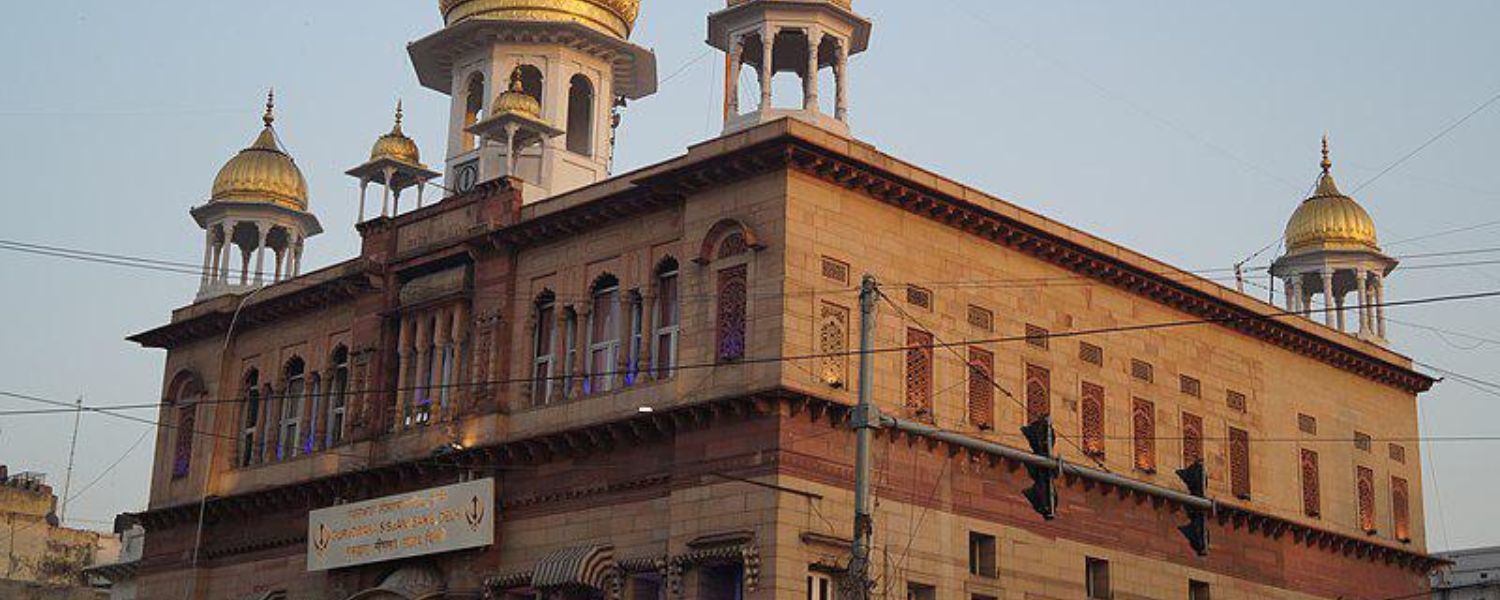
Gurudwara Sis Ganj Sahib holds a significant role in Sikhism, serving as a poignant reminder of sacrifice and devotion. Gurudwara sis ganj sahib, located in Delhi, stands among the nine historical Gurdwaras and was initially established in 1783 by Baghel Singh.
This revered site commemorates the martyrdom of the ninth Sikh Guru, Guru Tegh Bahadur. Initially constructed as a humble shrine, the Gurudwara has evolved, likely expanding post the Indian Rebellion of 1857 or after the Partition of India.
Its significance lies in the solemn events it commemorates and the spiritual significance it holds for Sikhs worldwide.
Gurudwara Sis Ganj Sahib stands as a testament to the unwavering faith of Guru Tegh Bahadur, who sacrificed his life to protect the religious freedom of others. His martyrdom at this site serves as a beacon of courage and selflessness for followers of Sikhism.
Today, the Gurudwara continues to attract devotees and visitors from around the globe, offering a place for prayer, reflection, and community. It stands as a living symbol of Sikh heritage, embodying the principles of compassion, equality, and service to humanity, which lie at the heart of Sikhism.
Gurudwara Sis Ganj Sahib remains a physical structure and a spiritual sanctuary, preserving the essence of the Sikh faith for generations to come.
Visitors and Pilgrims at Sis Ganj
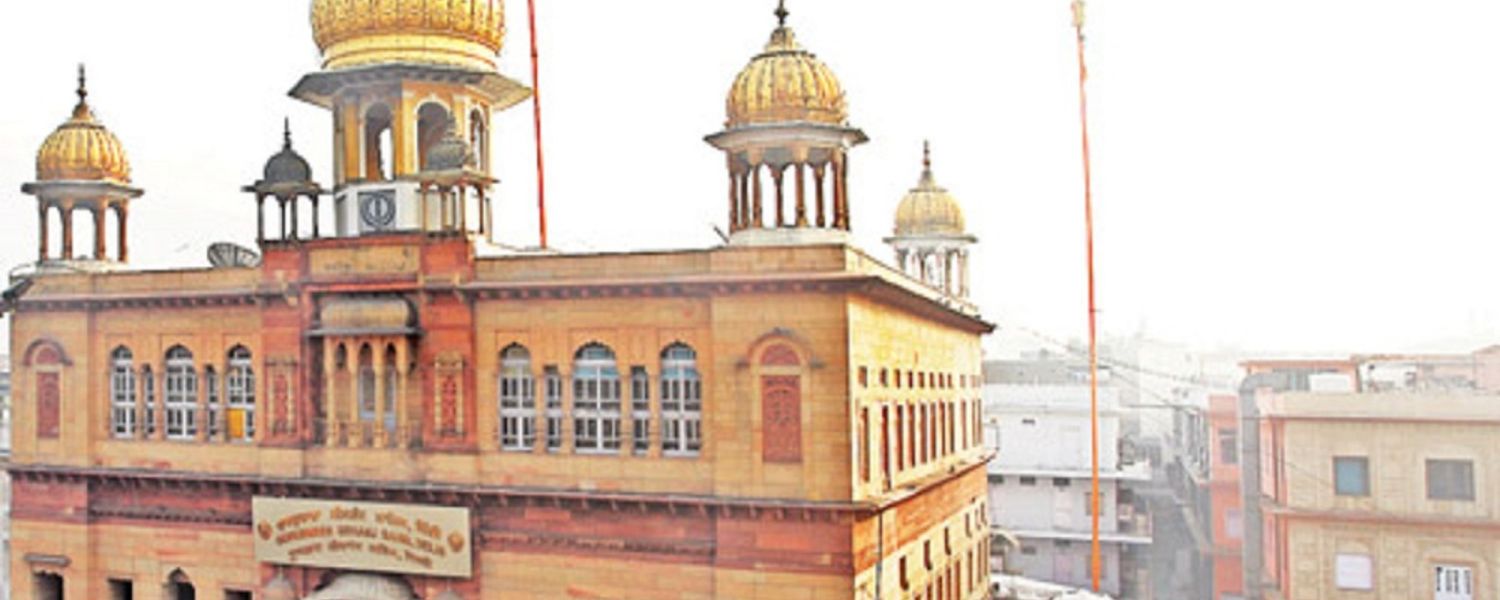
Gurudwara Sis Ganj is a sacred place for Sikhs and a significant religious site in Delhi. As visitors and pilgrims, it’s essential to adhere to certain etiquettes to honor the sanctity of this revered place. When entering Gurudwara Sis Ganj, dressing modestly is crucial. This means covering arms and legs appropriately.
Additionally, it’s customary to keep the head covered at all times while within the premises as a sign of respect. Before stepping into the main hall, visitors must remove their shoes.
This practice symbolizes humility and purity, emphasizing the equality of all individuals before the divine. As you immerse yourself in the serene ambiance of Gurudwara Sis Ganj, remember to maintain a respectful demeanor, understanding the significance of this spiritual sanctuary to the Sikh community.
Whether you’re here for worship, seeking solace, or simply exploring the rich cultural heritage, embracing these traditions fosters harmony and unity among all who visit.
By honoring these customs, visitors contribute to the inclusive and welcoming atmosphere of Gurudwara Sis Ganj, enriching their own experience and respecting the religious sentiments of the Sikh community.
Conclusion
In conclusion, Gurudwara Sis Ganj stands not only as a revered spiritual sanctuary for Sikhs but also as a symbol of resilience, faith, and the indomitable spirit of the Sikh community.
Its historical places in Delhi significance, rooted in the martyrdom of Guru Tegh Bahadur Ji, serves as a reminder of the sacrifices made for religious freedom and human rights.
The Gurudwara, located in the heart of Delhi, pulsates with devotion and offers solace to countless devotees who seek guidance and blessings.
Its architectural splendor and serene ambiance create an atmosphere conducive to reflection and spiritual introspection. The teachings of equality, service, and compassion preached within its walls resonate deeply with visitors, fostering a sense of unity and harmony.
Gurudwara Sis Ganj stands tall as a beacon of enlightenment, drawing people from all walks of life to partake in its sanctity and embrace the teachings of Sikhism, perpetuating the legacy of Guru Tegh Bahadur Ji for generations to come.
FAQ
Q. What is Gurudwara Sis Ganj?
Gurudwara Sis Ganj holds profound significance in Sikh gurudwara sis ganj sahib history, situated in the heart of Old Delhi, India. It commemorates the martyrdom of Guru Tegh Bahadur, the ninth Sikh Guru, who sacrificed his life to protect the religious freedom of Hindus. In 1675, Mughal Emperor Aurangzeb beheaded Guru Tegh Bahadur at the site known as “Sis Ganj”.
Q. What can visitors expect at Gurudwara Sis Ganj?
Visitors can experience a serene ambiance, participate in prayers, and witness the rich Sikh tradition of langar, a community kitchen serving free meals to all regardless of caste, creed, or religion. The Gurudwara also houses historical artifacts and scriptures and offers spiritual guidance.
Q. Is Gurudwara Sis Ganj open to all?
Yes, Gurudwara Sis Ganj warmly welcomes people of all faiths and backgrounds. It serves as a symbol of inclusivity and unity, embodying the Sikh principles of equality and compassion.
Q. How can one show respect while visiting?
Encourage visitors to cover their heads, remove shoes before entering, and maintain silence and reverence in the prayer halls.
Q. Can visitors participate in volunteering activities?
Gurudwara Sis Ganj encourages volunteering in various services such as preparing food, serving langar, and assisting in maintaining the premises.
